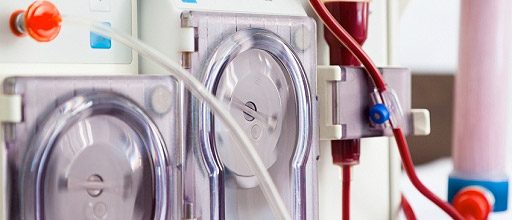
Research reveals uncertainty around effectiveness of common treatment used in high-risk kidney patients
People undergoing X-rays often require an intravenous contrast injection to improve the quality of the information obtained. Some of these patients will develop acute kidney injury as a result, and may require dialysis or hospitalisation. New research released today has revealed that the effectiveness of a common treatment used in high-risk patients has been over-estimated and remains uncertain.
Sodium bicarbonate treatment is widely used by clinicians across the world for the prevention of contrast-induced nephropathy (CIN), which accounts for 10% of all cases of acute kidney injury requiring hospitalisation. Researchers from The George Institute suggest that earlier reports have overestimated any benefits and that improved and larger trials are required.
Lead author, Dr Sophia Zoungas, The George Institute said, "Previous research has suggested that this treatment is beneficial. However, our new comprehensive systematic review suggests that the benefits of sodium bicarbonate remain to be demonstrated and have been overestimated in previous reports. As such, we believe the routine use of sodium bicarbonate is premature. This is particularly important as this is a treatment that makes x-rays much more complicated and expensive than would otherwise be the case, not to mention using scarce hospital resources."
"Clinicians need to examine the quality of systematic reviews in order to determine whether the conclusions made are indeed accurate. Our review demonstrates that the comprehensive and methodical approach undertaken considerably altered the conclusions regarding the effects of this treatment," added Associate Professor Vlado Perkovic, The George Institute.
Researchers reviewed nine published and 14 unpublished trials of sodium bicarbonate that included information on 3563 patients and 396 CIN events aiming to provide a reliable estimate of the nature and strength of any treatment effect. In the comprehensive meta-analysis, the research did not find clear evidence of overall benefit associated with the use of sodium bicarbonate to prevent CIN. The study also found that the inconsistency between previous findings highlighted the need for a high quality large trial that will clearly define the effects of intravenous sodium bicarbonate.
CIN, a form of acute renal failure, is a leading cause of hospital-acute kidney injury caused by the administration of contrast media for X-rays. People receiving contrast to improve the quality of various types of X-rays will develop reduced kidney function in up to 10% of cases. While many of these people recover spontaneously, in its most severe form, CIN is associated with clinically significant morbidity and mortality, including prolonged hospitalisation, requirement for dialysis, and an increased risk of death.
The new systematic review included more studies than previous research, and explored the results in more detail than ever before. Upon reviewing the research, researchers found that small early studies of lesser quality tended to suggest larger benefits, while more recent, larger and higher quality studies tended to find little or no benefit with the treatment.



